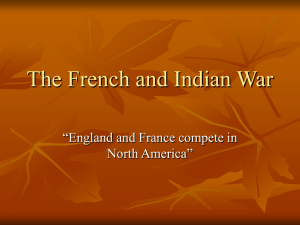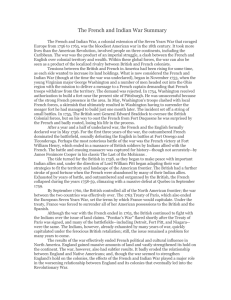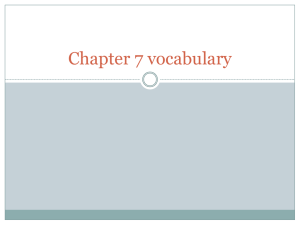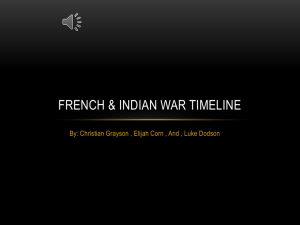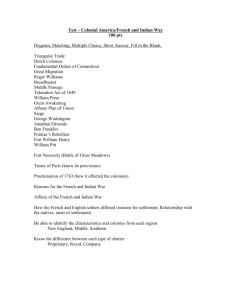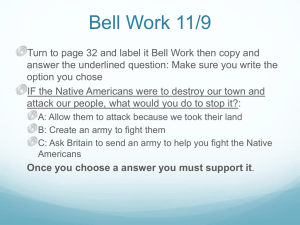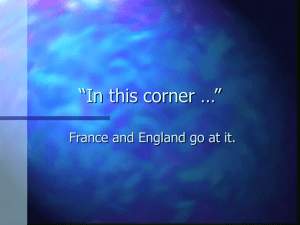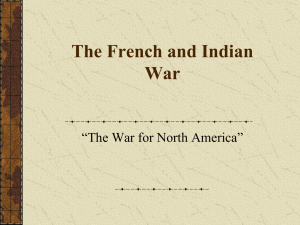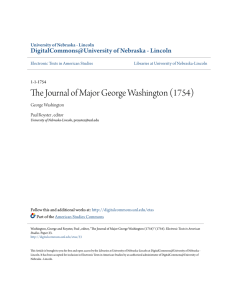The French and Indian War
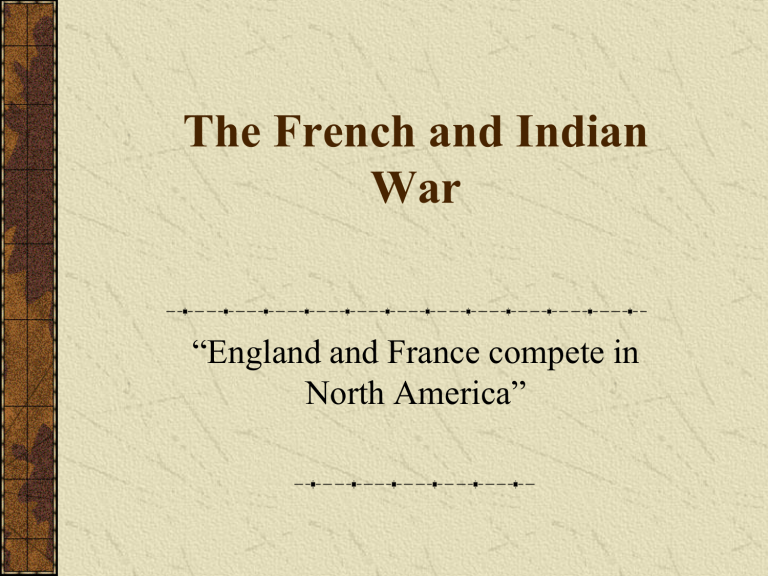
The French and Indian
War
“England and France compete in
North America”
French and English Collide
The “French and Indian
War”, the colonial part of the “Seven Years
War” that ravaged
Europe from 1756 to
1763, was the bloodiest
American war in the
1700’s. It took more lives than the American
Revolution, involved people on three continents, including the
Caribbean.
The war was the product of a clash between the French and English over colonial territory and wealth. In North America, the war can also be seen as a product of the local rivalry between British and French colonists.
Tensions between the British and French in
America had been getting worse for some time, as each side wanted to gain more land.
In the 1740s, both England and France traded for furs with the Native Americans in the
Ohio Country. By the 1750s, English colonists, especially the investors in the
Ohio Company, also hoped to convert the wilderness into good farmland.
Each side tried to keep the other out of the
Ohio Country. In the early 1750s, French soldiers captured several English trading posts and built Fort Duquense (now called
Pittsburgh) to defend their territory from
English incursions.
What is now considered the “French and Indian
War” (though at the time the war was undeclared), began in 1753, when a young Virginian, Major
George Washington, and a number of men headed out into the Ohio region to deliver a message to a
French Captain demanding that French troops leave the territory. The demand was rejected by the
French.
Behind the Scenes-Albany Plan of Union
Aware of the hard times that war could put on the colonies, English officials suggested a "union between ye Royal,
Proprietary & Charter Governments."
Some colonial leaders agreed and in
June 1754 delegates from most of the northern colonies and representatives from the Six Iroquois Nations met in
Albany, New York. They decided on a
"plan of union" drafted by Benjamin
Franklin. Under this plan each colonial legislature would elect delegates to an
American continental assembly presided over by a royal governor. The plan is rejected by Crown and colonies alike.
The War Begins -
Unofficially
In 1754, George Washington and a small force of Virginia militiamen marched to the Ohio Country to drive the French out. Washington hoped to capture Fort Duquesne but soon realized the fort was too strong, so he retreated and when chased by the French, quickly built Fort Necessity. If he could not drive the French from the area, they would at least have to reckon with the English fortifications. He also hoped to convince native people that
England was the stronger force, so that they would ally with the
British rather than the French.
A combined force of French soldiers and their native allies overwhelmed Fort Necessity on July 3, 1754, marking the start of the “French and Indian War” in North
America. The French permitted Washington and his men to return to Virginia safely, but made them promise they would not build another fort west of the Appalachian
Mountains for at least a year. England did not officially declare war until 1756, although the conflict had actually begun two years earlier at Fort Necessity.
After a year and a half of undeclared war, the French and the English formally declared war in May 1756. For the first three years of the war, the outnumbered French dominated the battlefield, soundly defeating the English in battles at Fort Oswego and Ticonderoga. Perhaps the most notorious battle of the war was the French victory at
Fort William Henry , which ended in a massacre of British soldiers by Indians allied with the French.
The tide turned for the
British in 1758, as they began to make peace with important Indian allies and, under the direction of Lord
William Pitt began adapting their war strategies to fit the territory and landscape of the American frontier. The
French were also abandoned by many of their Indian allies. Exhausted by years of battle, outnumbered and outgunned by the British, the
French collapsed during the years 1758-59, climaxing with a massive defeat at
Quebec in September 1759.
The end and a new war
By September 1760, the British controlled all of the
North American frontier; the war between the two countries was effectively over. The 1763 Treaty of
Paris , which also ended the European “Seven Years
War”, set the terms by which France would capitulate.
Under the treaty, France was forced to surrender all of her American possessions to the British. Although the war with the French ended in 1763, the British continued to fight with the Indians over the issue of land claims. "Pontiac's War" flared shortly after the
Treaty of Paris was signed. Atrocities were committed on both sides- most notably, the British engaged in biological warfare when they gave natives blankets infected with smallpox.
North
America
1763:
Lasting effects
The results of the war effectively ended
French influence in North America.
England gained massive amounts of land and vastly strengthened its hold on the continent. The war, however, also had subtler results. It hurt relationships between the English and Native
Americans; and, though the war seemed to strengthen England's hold on the colonies, the effects of the “French and
Indian War” played a major role in the worsening relationship between England and its colonies that eventually led into the Revolutionary War.
